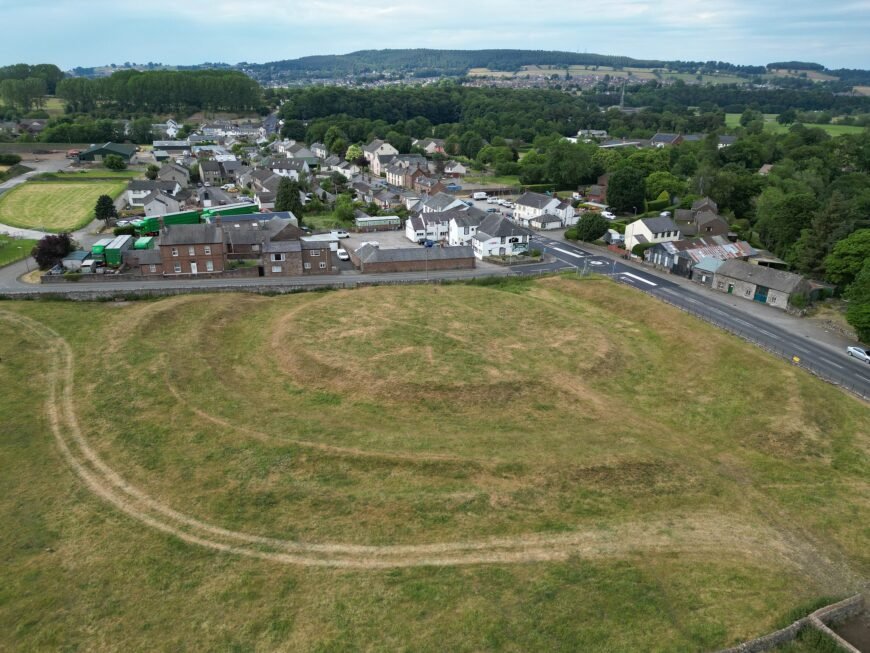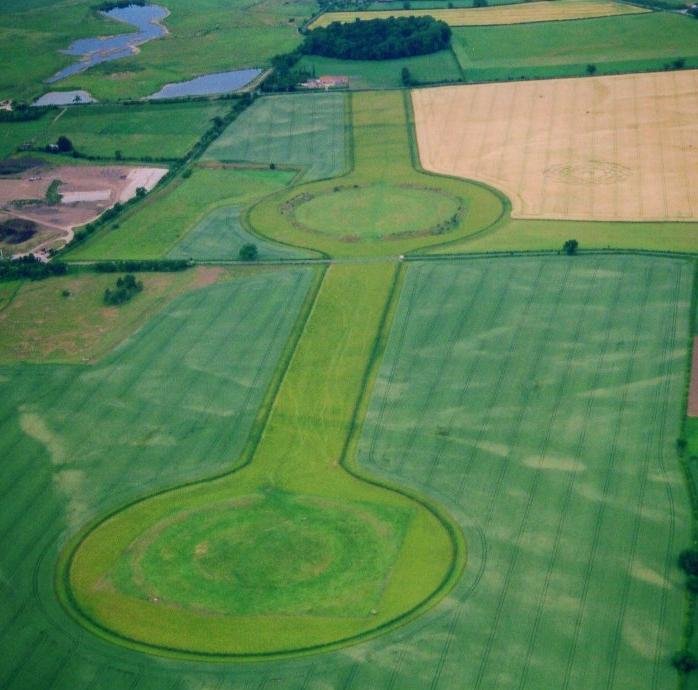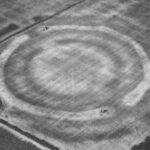Site Details:

King Arthur's Round Table is a Late Neolithic Henge (2000-1000 BCE). It consists of a low circular platform surrounded by a wide ditch 12m wide by 1.5m wide, this configuration of a bank and ditch being a characteristic of these prehistoric henges.
There were originally two entrances to the central area – one on the south-east, which still exists, and another to the north-west; the latter was destroyed, along with part of the bank and ditch, and two standing stones (as recorded in the seventeenth century) when the road (B5320) was constructed.
This site was excavated in 1937 where the holes for the standing stones were discovered as shown in the original location in the seventeenth century plan. The purpose of this site is unclear but is thought as a meeting area for possible trading and/or (the archaeologists 'go to' when in doubt)...ritual/ceremonial use. To really appreciate this site, it ideally needs to be seen from above as in my aerial shot at ground level, it's not 'that' imposing or striking but obviously still well worth the visit.

One slightly higher, it's shocking that those roads have cut into it, I guess they would've been just tracks once, but finally mettled as Eamont Bridge expanded.
Photo and words courtesy of Lee Horatio WalkerKing Arthur's Round Table is a Neolithic henge in the village of Eamont Bridge, about 2 kilometres south-east of Penrith, Cumbria. It dates from about 2000 BC and has a diameter of about 90 metres.
The henge is part of a ritual landscape that includes two other henges, Mayburgh Henge and Little Round Table, both within 400 metres of King Arthur's Round Table.
The henge has two original entrances, one in the south-east and one in the north-west, but the latter has been mostly destroyed by modern roads and buildings. There were also two standing stones, one on each side of the north-west entrance, but they have disappeared since the 17th century.
The henge was excavated in 1937 by R.G. Collingwood and in 1939 by G. Bersu, who had different interpretations of the features they found. Collingwood identified a number of postholes and a cremation trench near the centre of the site, while Bersu argued that the postholes were not significant and that there was no evidence of cremation.
The henge was later landscaped in the late 18th to early 19th century, possibly for use as a tea garden. It is now under the care of English Heritage and open to the public.
https://youtu.be/q_fsnjE5jQoReferences
King Arthur's Round Table - Wikipedia. (n.d.). Retrieved March 03, 2024, from https://en.wikipedia.org/wiki/King_Arthurs_Round_Table
King Arthur's Round Table | English Heritage. (n.d.). Retrieved March 03, 2024, from https://www.english-heritage.org.uk/visit/places/king-arthurs-round-table/
King Arthur's Round Table, nr Eamont Bridge, Cumbria. (n.d.). Retrieved March 03, 2024, from https://historicengland.org.uk/services-skills/education/educational-images/king-arthurs-round-table-nr-eamont-bridge-9418
Leach, S. (2019). KING ARTHUR’S ROUND TABLE REVISITED - A REVIEW OF TWO RIVAL INTERPRETATIONS OF A HENGE MONUMENT NEAR PENRITH IN CUMBRIA. The Antiquaries Journal, 99, 1–23. https://doi.org/10.1017/S000358151900020X
Site Visit Notes:
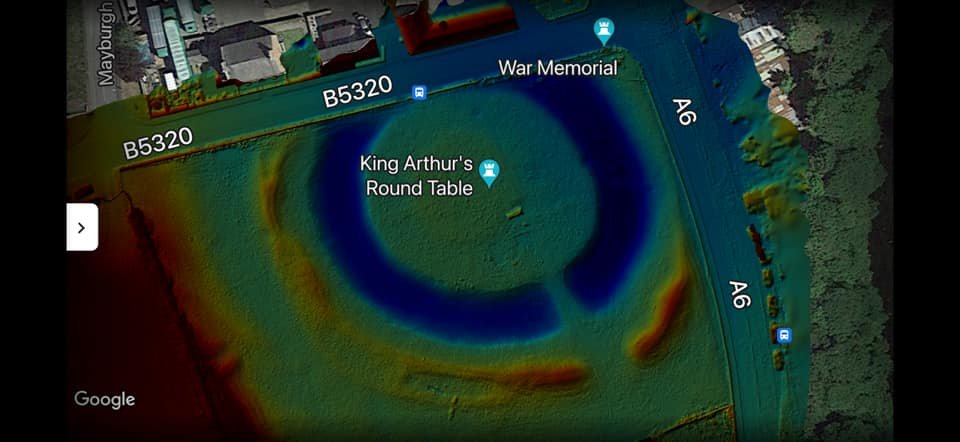
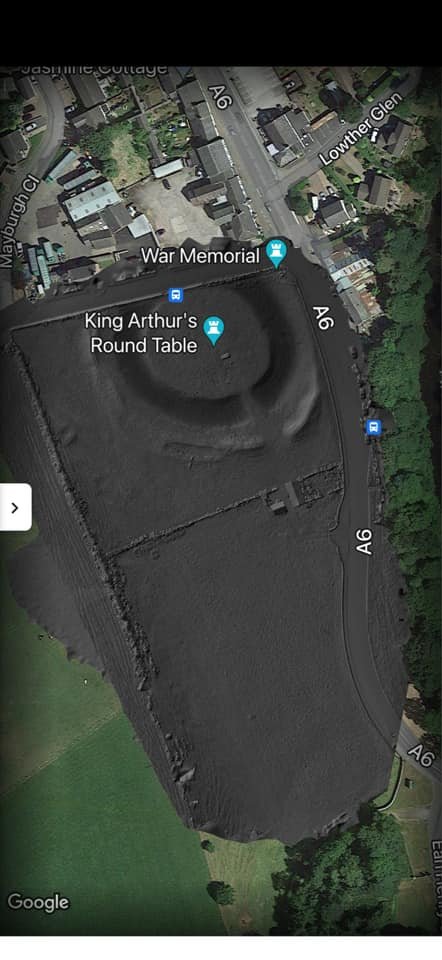
"And here you can see the edge of the destroyed twin henge at the very bottom of the image, now an almost invisible mere dent in the ground" Tony Hunt - Yorkshire Archaeological Air Mapping.
Other Notes:

Image credit: Phil Barrett

Image credit: Dr Emma Watson
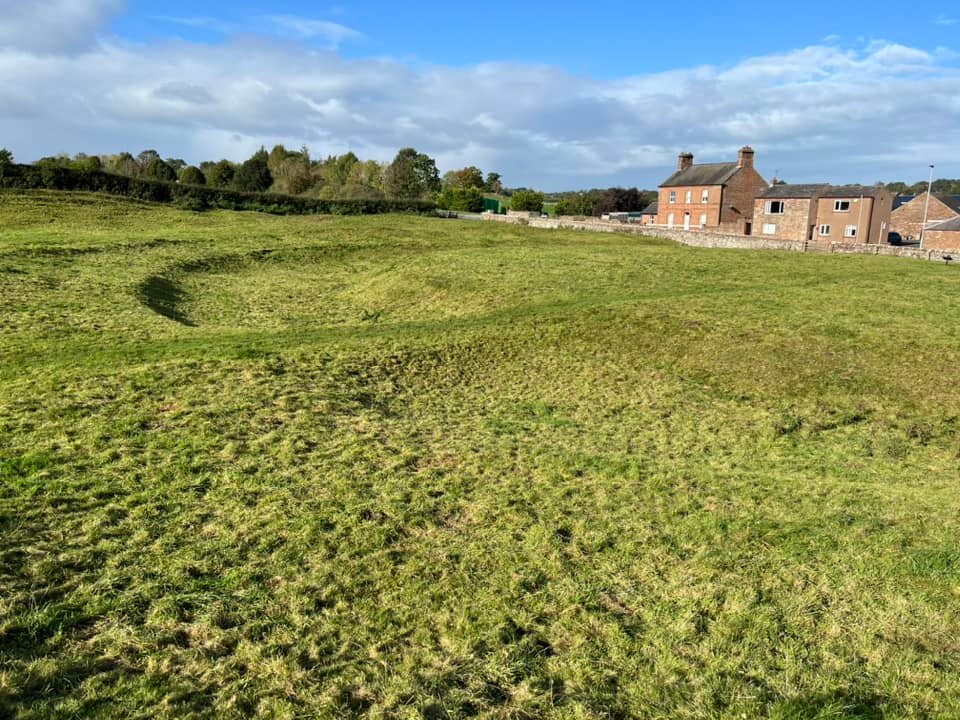
Site Gallery
Gallery Empty

